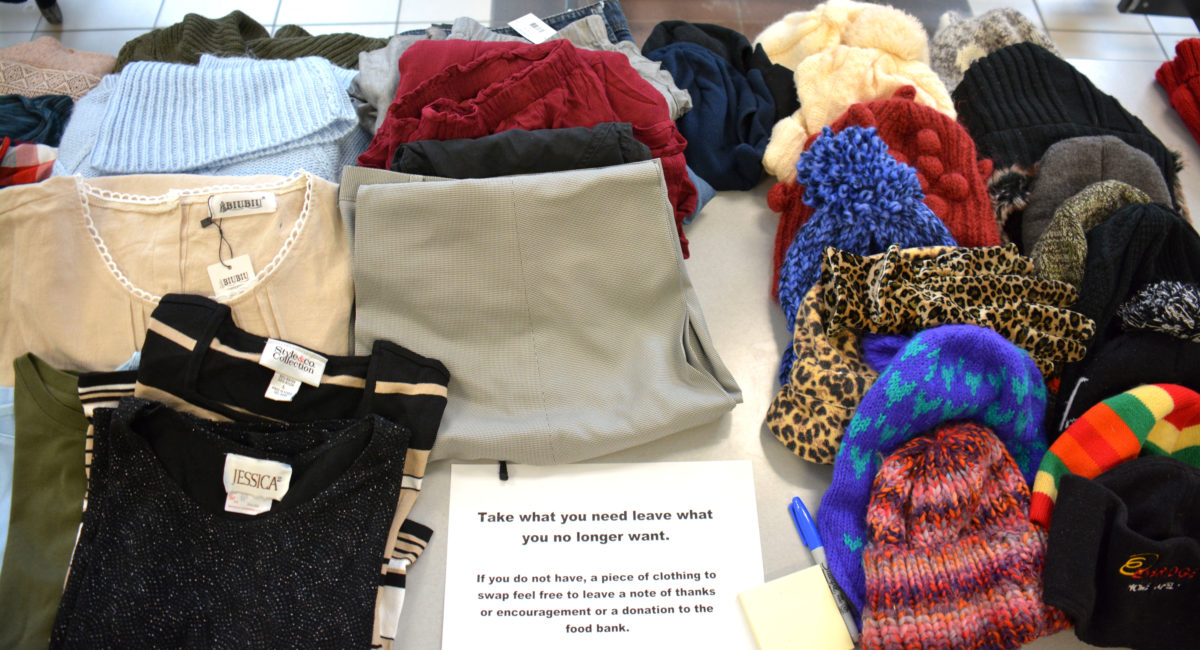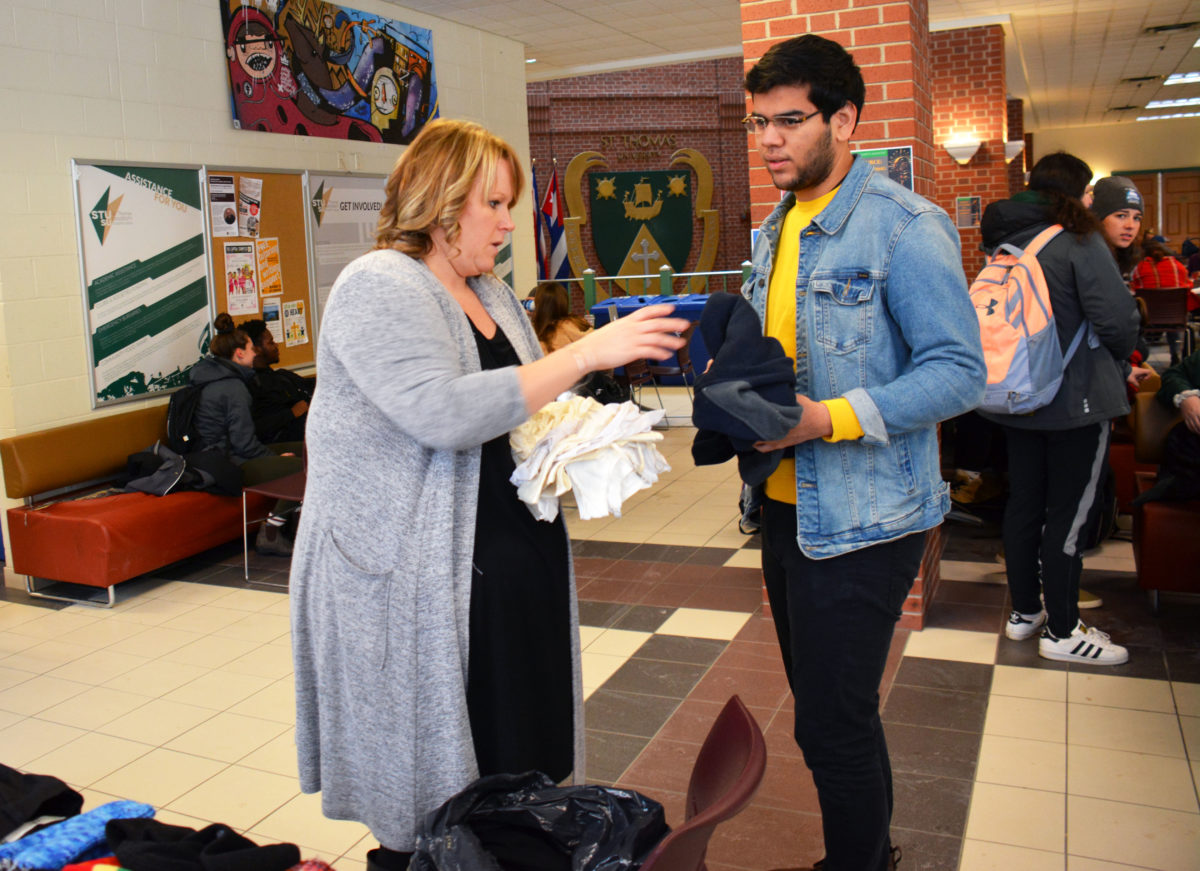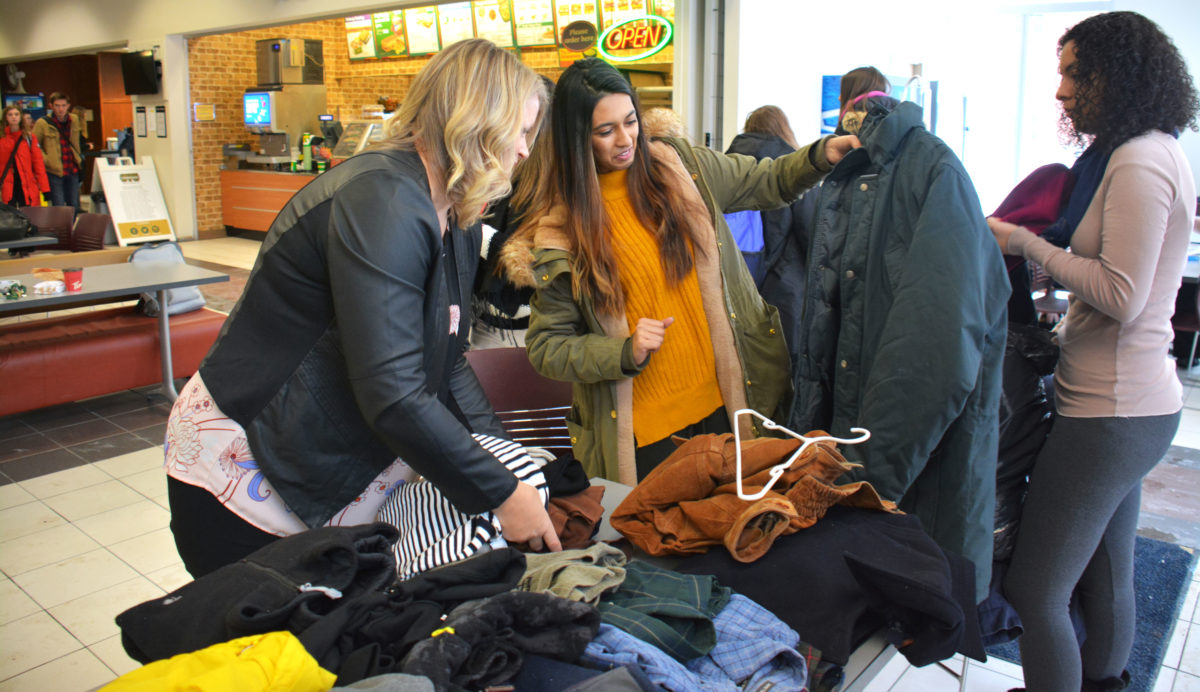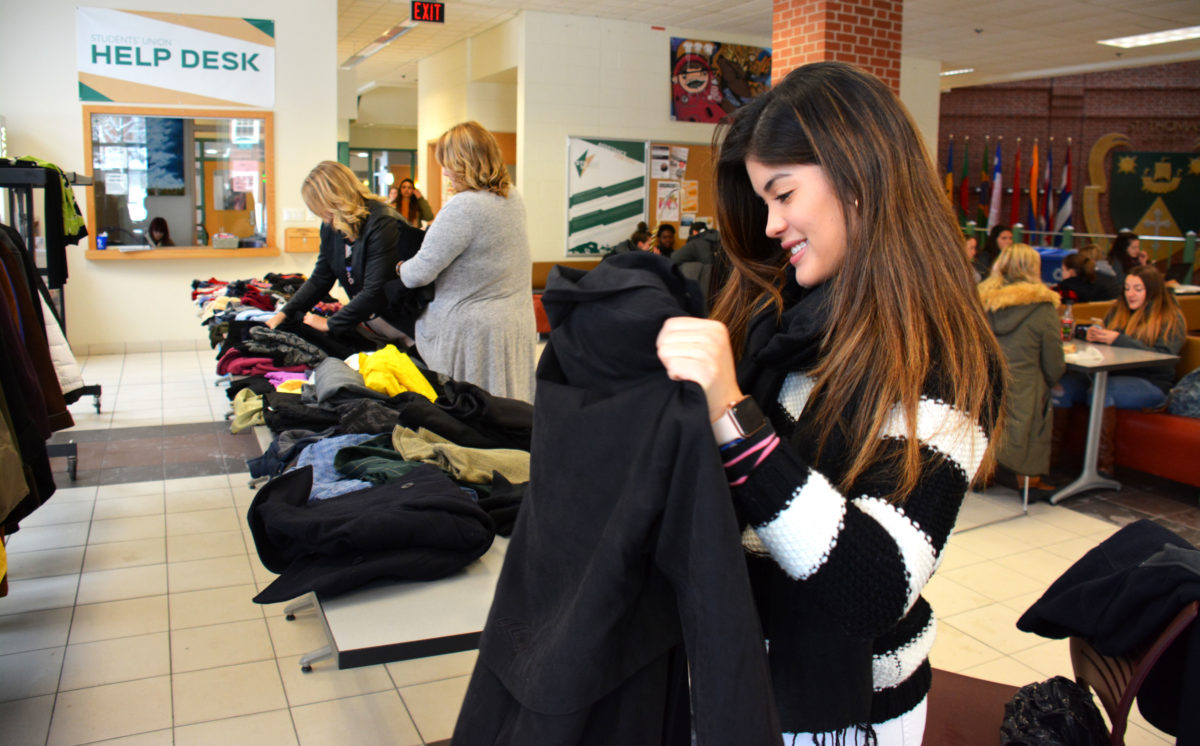On Nov. 21 and 22, clothing racks and tables in James Dunn Hall were filled with winter gear including hats, scarves, sweaters, coats and more. The Winter Clothing Swap & Drop was hosted for the first time to help students, faculty and staff in need of warmer clothing suit up for winter.
The event was organized by the St. Thomas University Students’ Union, the St. Thomas University International Student Association, the international office and the campus ministry.
There were no rules. Students, faculty and staff were encouraged to swap clothes, drop off clothes without taking any, or take clothes without dropping any off. The purpose of the event was to prepare people for the cold winter season. Faculty members helped by donating more than half of the clothing available.

Danika Phinney, a fourth-year student, picked up a jacket, a pair of boots and two sweaters.
“Some people don’t have the luxury of being able to go buy clothes and have those sorts of resources to be up to date with things,” she said.
The event was intended for international students, but organizers opened it up to all students.
“We can’t just assume that international students are the only ones that might have this need, so we should open it up to the entire community,” said Carrie Monteith-Levesque, STU’s international student coordinator.


Marie-Carmen Sedji, a second-year student, picked up a blazer and a flannel.
“It’s a good way to help students get the clothing they need in the style they want, without spending money they don’t necessarily have,” said Sedji.
STUISA president Manuel Garcia wanted to ensure the association makes a difference this year and reaches the international community in a tangible way.
“We wanted to help reduce costs when it came to winter clothing. Since my first year, I’ve realized that’s one of the biggest expenses international students have, especially those that come from tropical countries [who] have never seen snow,” he said.
Garcia said many international students are unprepared for winter.
“I think at least half of them were unprepared, but I wouldn’t be surprised if it was 75 per cent of the student body.”



